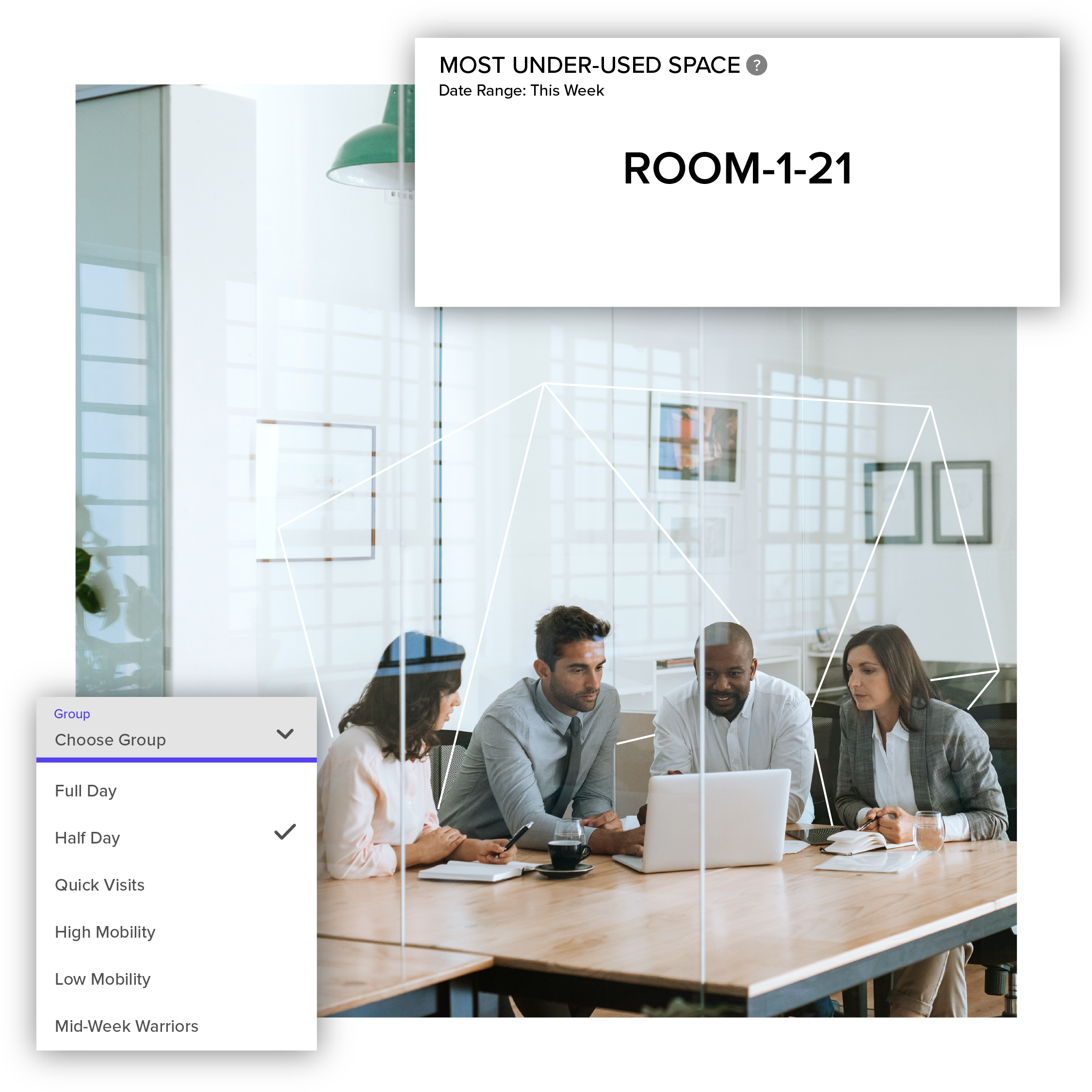Struggling with RTO? Get real-world data to revamp your office spaces!
As businesses grapple with post-pandemic work policies, many HR leaders find themselves facing the twin challenges of how to measure the success of their return-to-office (RTO) mandate and also how to create a welcoming office environment workers want to return to. The solution to both starts with collecting accurate data, not just about how many employees are coming back to the office, but how, when and why they’re using specific spaces and resources, as well as who they’re collaborating with.

Decisions based on data, not opinions
As hybrid work becomes a central part of many RTO policies, it’s clear that traditional metrics are no longer enough to capture the complexity of today’s workplace. To gather this type of information certainly requires more than anecdotal information, which can be helpful, but is often too subjective and inconsistent. Without solid data to back up their requests, HR teams will struggle to justify the investment and secure the necessary budget to make improvements.
New metrics for a changing workplace
Even traditional data tools like badge swipes fall short – they may tell you who’s coming into the office, but they don’t tell you how long they stay or what they do while on site. This is exactly why the term “coffee badging” was coined – to describe the phenomenon of employees dropping by the office just to grab a coffee or attend a brief meeting before setting off shortly after. While coffee badging shows that employees are technically in the office, it doesn’t capture meaningful engagement or the value of the time they spend there.

The power of data-driven insights
Without a clear understanding of how different areas of the office are being used, HR leaders struggle to make informed decisions about workspace redesign or resource allocation. It becomes hard to know which spaces need improvement and which are already working well.
Data-driven insights offer a way out of this RTO quagmire. By tapping into real-time space utilization data, HR leaders can gain a deeper understanding of employee behavior that goes far beyond surface-level attendance metrics. Instead of simply knowing who is in the office, space utilization platforms like Innerspace reveal how different areas of the office are being used and offer insights into how to gain improved efficiency and productivity.
-
Uncover underutilized spaces
Space utilization data highlights which areas of the office are being underused, such as informal meeting spaces, game rooms, or single-use areas. This information helps HR identify opportunities for redesign and optimization.
-
Foster productivity and collaboration
Data can reveal which spaces are most conducive to productivity and collaboration, allowing HR to allocate resources where they will have the greatest impact.
-
Make informed decisions
Instead of guessing which office areas need improvement, real-time data provides concrete insights, enabling HR leaders to make evidence-based decisions that efficiently align office design with employee needs and behaviors.

Practical takeaways for HR leaders
So how do you go about actually making improvements to your utilization of office space? Here’s a quick four-point plan that starts at gathering real-world usage data and ends with a work environment that is so useful and inviting it can overcome the convenience of working from home.
-
Analyze space usage trends
Use data to identify frequently used areas and those that are underutilized. This will help you allocate resources more effectively.
-
Justify investments with data
Equip yourself with hard data to facilitate conversations with leadership and justify the need for workspace improvements.
-
Redesign underutilized spaces
Once budgets are approved, start transforming spaces that aren’t being used effectively into areas designed for collaboration or focused work, depending on employee needs.
-
Create office environments employees love
Leverage data to align office spaces with employee preferences, making the office a place employees look forward to returning to.

The future of HR and workspace strategy
The role of HR is quickly evolving from managing people to also managing resources and the workplace experience as a whole. Data is the key driver of this transformation as space utilization insights change the way HR leaders think about workspace strategy, empowering them to make data-backed decisions that lead to long-term cost-savings and more efficient, productive, and employee-friendly work environments.
Accurate space utilization data through Wi-Fi?
We'll prove it to you.
See why industry leaders leverage InnerSpace to generate valuable insights that go beyond occupancy.

